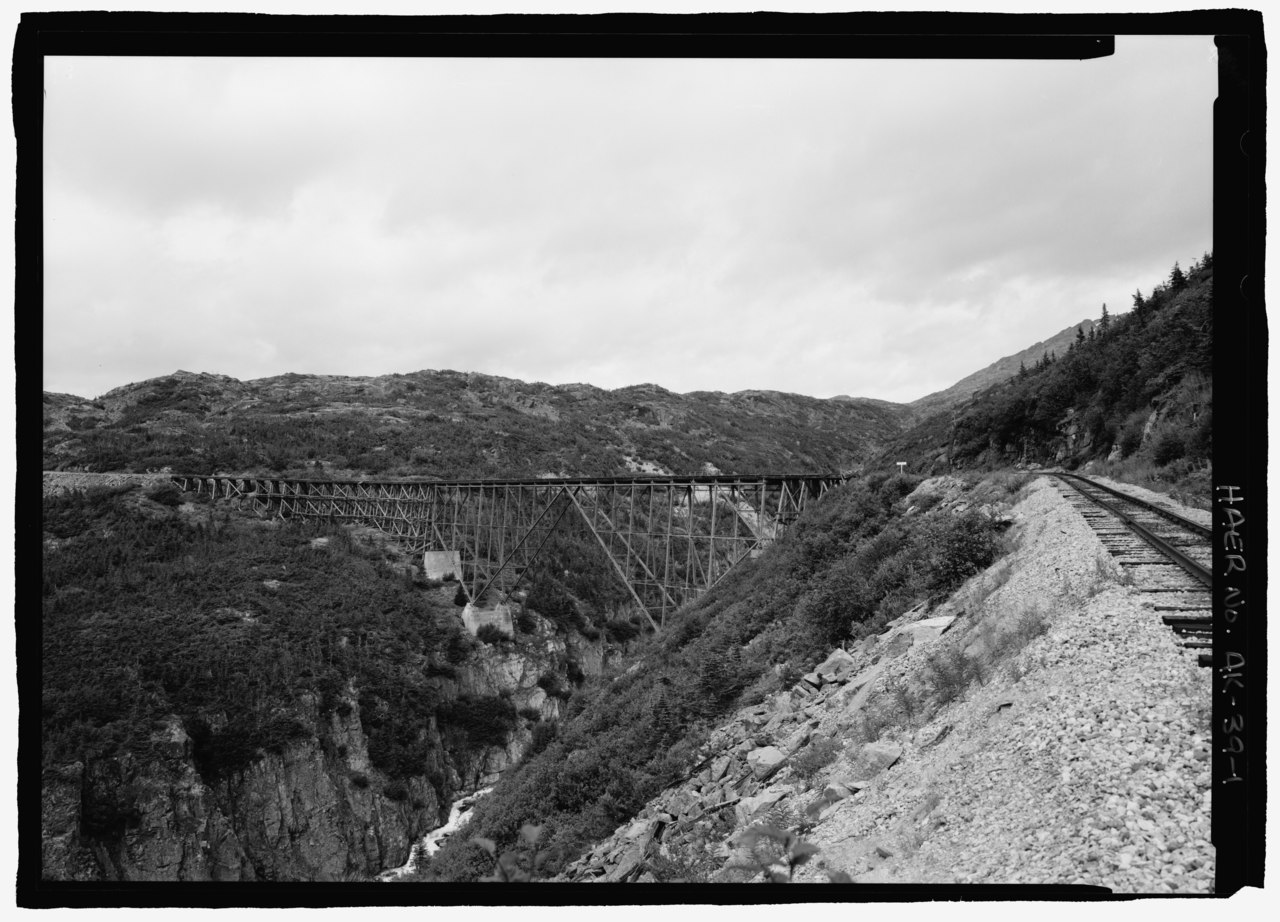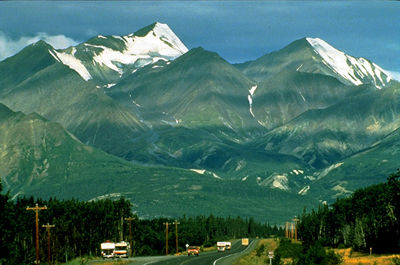The White Pass & Yukon Route railway was built to meet the demand for transportation to the gold fields of the Yukon River basin during the Klondike Gold Rush. Completed in 1900, it was a feat of engineering and one of the steepest railways in North America. It ran 177 km from Skagway, Alaska, to Whitehorse, Yukon. Today, tourist rail excursions run on a portion of the original line.

Looking north toward the cantilever bridge on the White Pass & Yukon Route. Photo by Jet Lowe.
Construction
Work began in 1898, at the height of the Klondike Gold Rush, to provide transportation from Skagway, on Alaska’s Pacific coast, to Whitehorse, Yukon. Building of the narrow-gauge railway was an extremely difficult engineering feat. It required extensive blasting, tunnels and precarious bridging. At least 35 of the 35,000 men who worked on construction were killed. The track reached the summit of White Pass, on the Alaska-British Columbia border, in February 1899. The last spike was driven at Carcross, Yukon, on 29 July 1900. (While one crew had laid tracks north from Skagway, a second crew had worked south from Whitehorse.)Operations
The gold rush had ended by the time construction finished. Demand for the railway’s service dropped as many prospectors left the area. The line struggled along in the early 20th century, carrying passengers and freight. During the Second World War, it played a key role transporting supplies for the construction of the Alaska Highway.
Map showing the White Pass & Yukon Route railway's route through Alaska, British Columbia, and the Yukon.
"File:YukonWhitePassRailmap.png "
by Kelisi is licensed under CC BY-SA 3.0.
The postwar mining boom in the Yukon kept the White Pass & Yukon Route in business. In 1954, the railway replaced its steam locomotives with a diesel-electric fleet. During this period, it also expanded into other freight transportation services (e.g., trucking and marine shipping) that connected with its rail line.
The shutdown of the White Pass & Yukon Route in 1982, as a result of the collapse in metal prices, deprived Whitehorse of some employment and its rail link to the sea. In 1988, however, the railway reopened as a tourist destination. It started running scenic excursions on part of the original route, from Skagway to the summit of White Pass. It has since extended this service to Bennett, British Columbia, and Carcross, Yukon.

 Share on Facebook
Share on Facebook Share on X
Share on X Share by Email
Share by Email Share on Google Classroom
Share on Google Classroom












